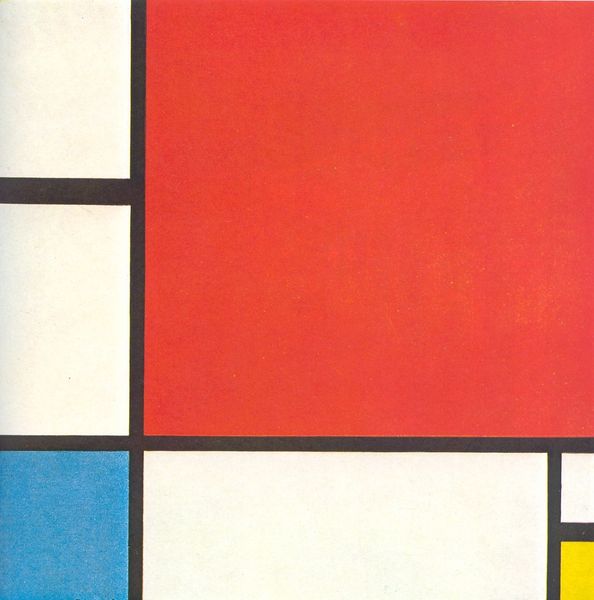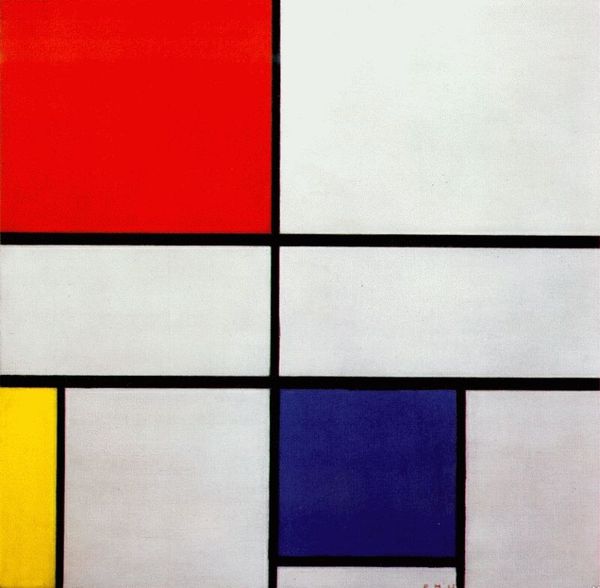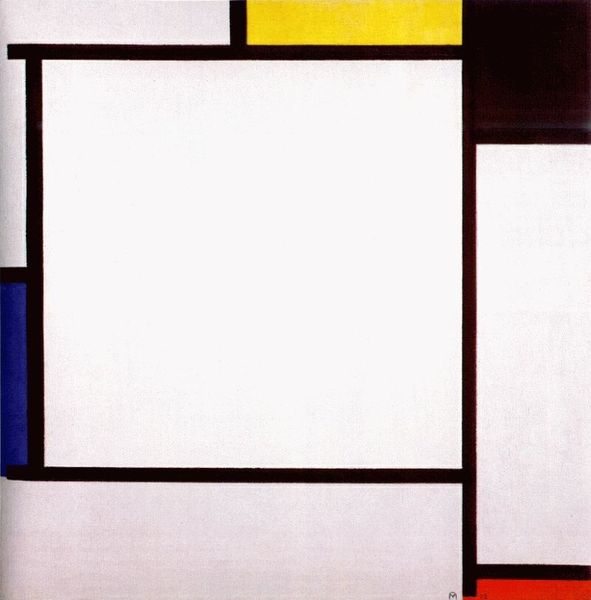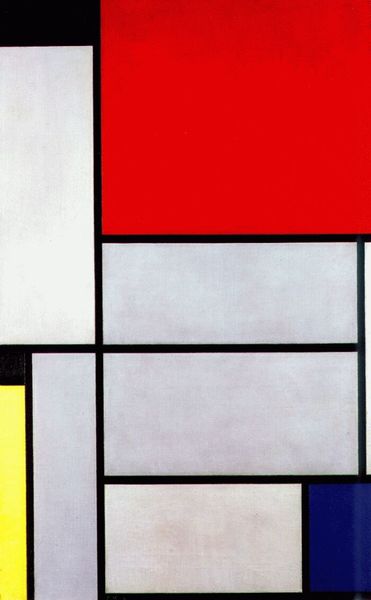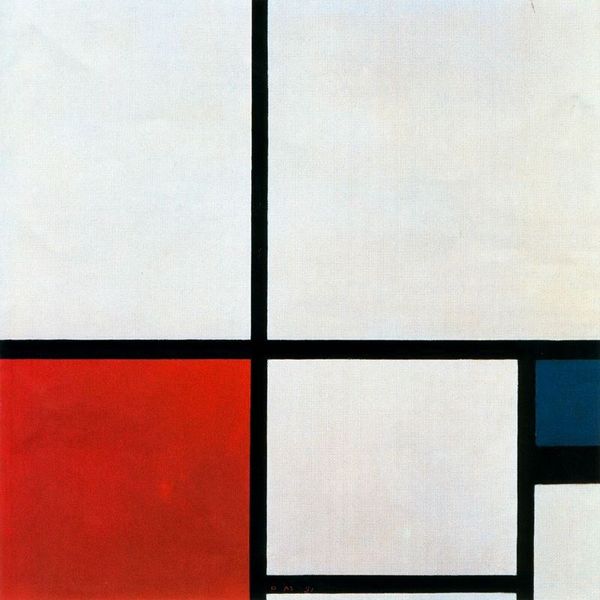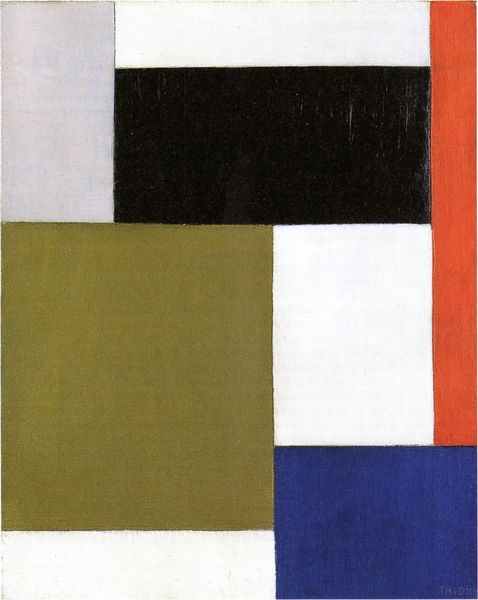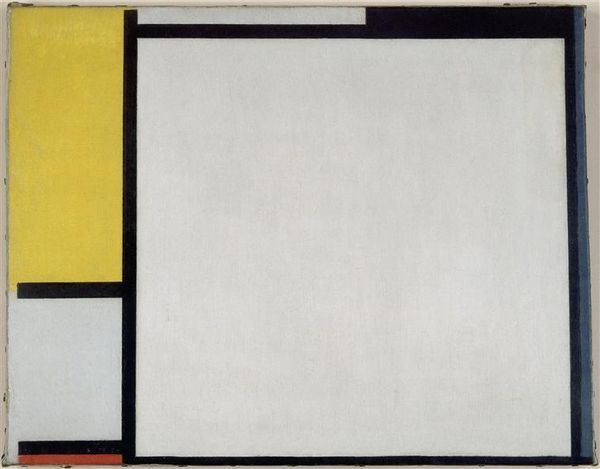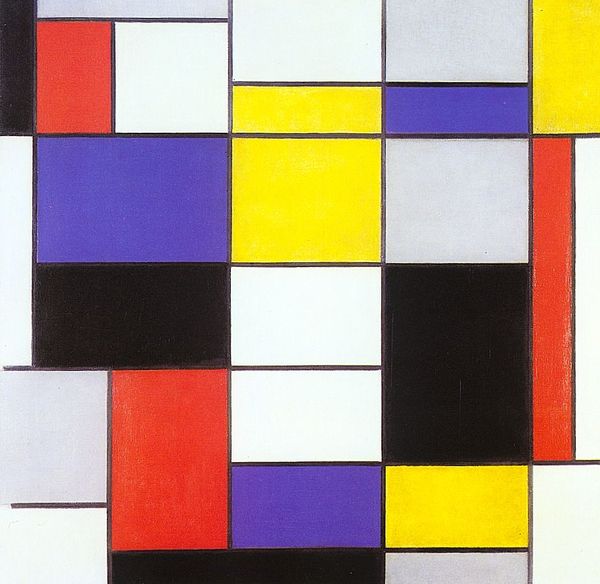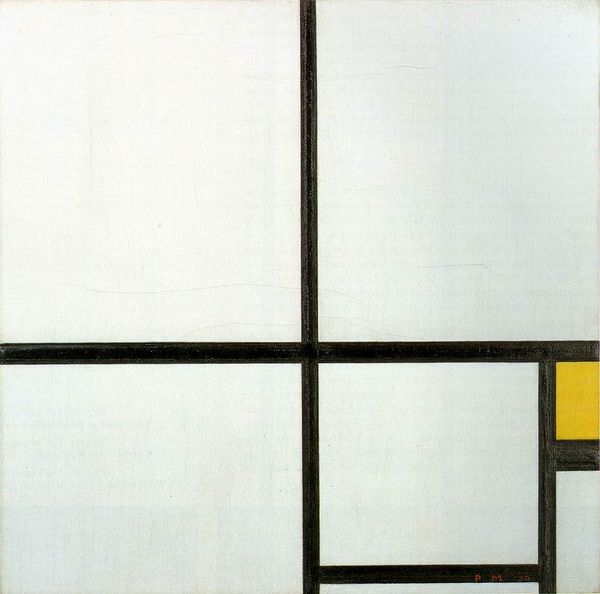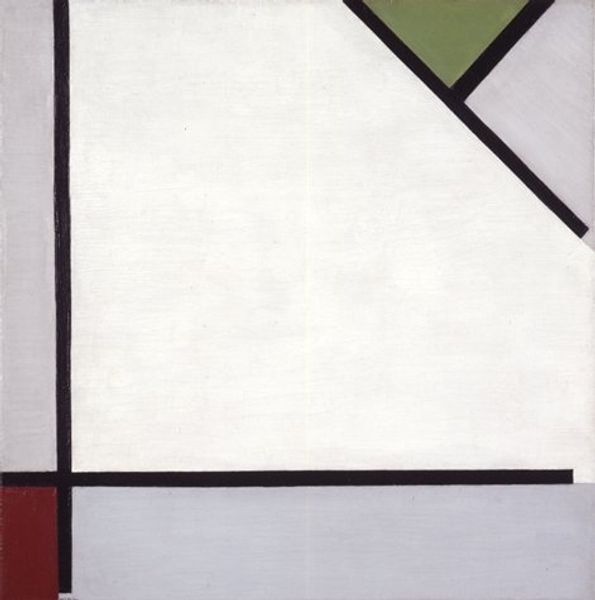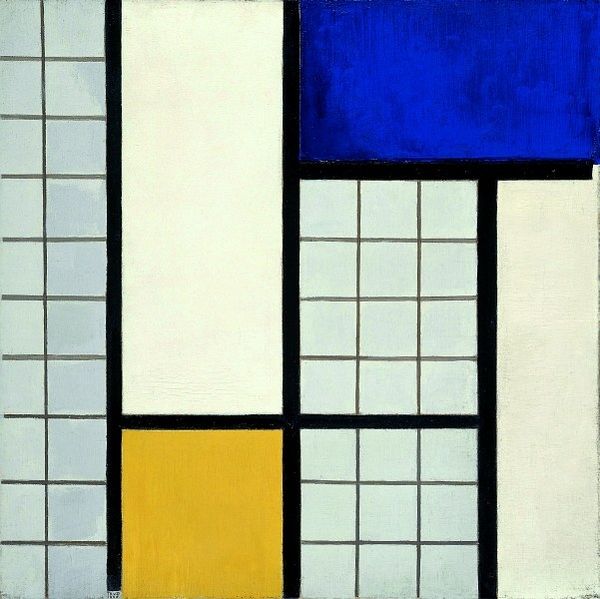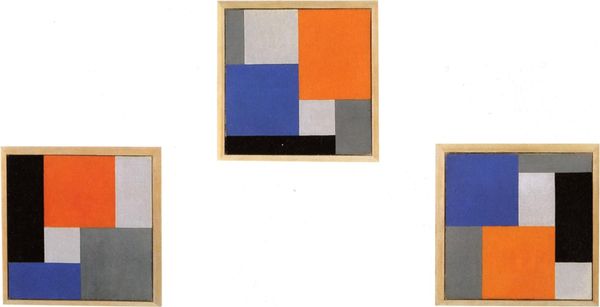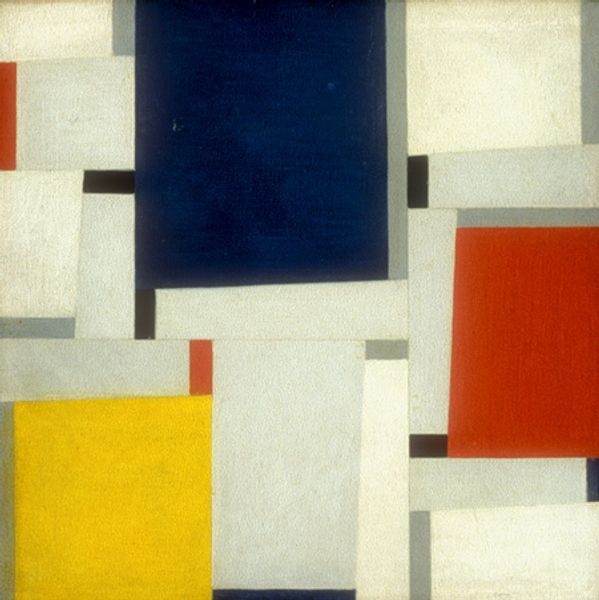
Tableau 3 with Orange -Red, Yellow, Black, Blue and Gray 1921
0:00
0:00
pietmondrian
Kunstmuseum Basel, Basel, Switzerland
painting, oil-paint
#
neo-plasticism
#
abstract painting
#
painting
#
oil-paint
#
acrylic on canvas
#
rectangle
#
geometric
#
geometric-abstraction
#
abstraction
#
line
#
modernism
Copyright: Public domain
Curator: This is Piet Mondrian's "Tableau 3 with Orange-Red, Yellow, Black, Blue, and Gray," painted in 1921. It's a classic example of his Neo-Plastic style. Editor: It’s striking! The asymmetry is quite dynamic; those bold blocks of color, framed by the stark black lines, are almost jarring. It feels surprisingly modern, even a century later. Curator: Precisely! Mondrian's process involved a rigorous reduction to what he saw as the essential elements: the straight line, the primary colors, and a neutral palette of black, white, and gray. It was a painstaking exercise in abstraction, reflecting his spiritual beliefs and utopian ideals. He aimed to create a universal visual language. Editor: I wonder about the relationship between Mondrian’s theories and the rise of industrial production during that era. These precise lines and clean blocks almost mirror the mechanized world taking shape then, reflecting ideas about order and functionality. The way he handles oil-paint to achieve such a smooth, almost machine-like finish—it's fascinating, isn’t it? What statements was the museum itself trying to make, investing in art with such overt utopian philosophies during the interwar period? Curator: Exactly. His simplification was intended to reflect and shape a new social order, creating work with minimal, reproducible forms. By choosing basic forms and hues, the work rejects any sense of artistry relying instead on universally accessible materials and construction methods. And, the reception of his art played a pivotal role in the development of abstract art’s visibility, as more people engaged with such utopian and progressive aims. Editor: Looking at this now, in our present historical moment, those utopian aspirations are somewhat tinged with irony, or at least with historical awareness. Mondrian couldn’t have foreseen how easily these basic visual forms could be translated to branding, corporate logos and all sorts of products. Curator: The point being, Mondrian’s legacy isn't solely about the artworks, but it includes its complicated consumption and evolution within broader social structures. Editor: A powerful reminder that art, even in its purest abstract form, is intertwined with culture. Curator: Indeed, a convergence of historical ideals and material construction with continuing effects today.
Comments
No comments
Be the first to comment and join the conversation on the ultimate creative platform.
